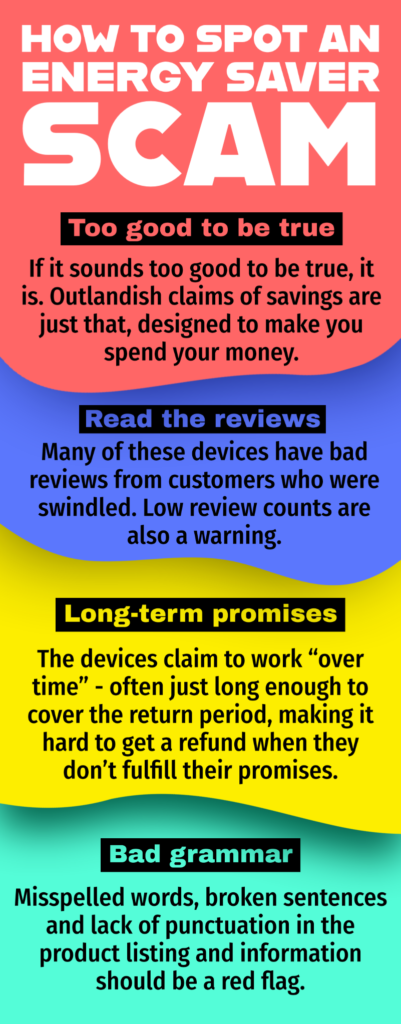As an electric cooperative, nothing frustrates us more than companies and individuals who take advantage of our members with false claims of energy savings. While we’d like to help everyone avoid these rip-offs, if we can get just one person to recognize a scam and not spend hard-earned money on a useless device, we’ll have accomplished our goal.

Over the years, we’ve seen plenty of power-saving scams. They often claim you can reduce or even eliminate your power bill by plugging in their devices around your home. The fact is, there is nothing that you can plug in that will reduce your electricity usage and lower your household power bill.
The problem with these scams is that they often rely on a grain of truth, which is why they come across as believable. The marketing spiel for the devices makes them seem technologically sound and capable of meeting their claims. Additionally, these devices are often found on mainstream online marketplaces and retailers, increasing their appearance of legitimacy. But the truth is, they are not legitimate. And if you read the comments from verified purchasers, you’ll see that they learned the hard way that the devices are a scam.
Such “energy-saving” devices go by many names and will often even change names to avoid the backlash that comes when customers feel ripped off. Some common examples of these devices include the Power Pro Save and Heunwa Power Save. Regardless of the name, they all have a similar claim that if you buy several of these devices and plug them into outlets around your home, they will balance or clean the power, thus saving you money. A vital part of this claim is that it takes time for the savings effect to be noticed, which coincidentally takes you out of the return period and leaves you stuck with the device once you realize you’ve been scammed.
The grain of truth here is that these devices can technically affect reactive power, and while that is one form of power, it’s not the form that supplies electricity to heat, cool, light or operate your home. That’s called ‘real’ power. And the reason the devices won’t save you any money on your power bill is because CAEC bills you based on your ‘real’ power usage and not ‘reactive’ power. The other truth is that utilities, such as CAEC and large industrial customers, purchase power in units of ‘total’ power, which includes real power and reactive power. So, for a utility or a large industrial customer, reducing the wholesale power bill by managing ‘reactive’ power and improving Power Factor is a real goal. But that’s not how any of us as individuals reduce power bills in our households. Instead, the way to reduce your electricity use and lower your power bill is by turning things off when they aren’t in use or by installing more efficient appliances. If you’d like to learn more about this concept, a full explanation can be found in this video.
The confusion between ‘reactive’ and ‘real’ power is what the marketers of these scam devices rely on to make their product seem feasible. However, if these devices were legitimate and could truly save our members money, we would be offering them. One of our main goals is to help our members use less of what we sell by providing information and programs to help them use energy efficiently.
Unfortunately, the only real defense against these scams is through education and spreading the word to expose these devices for the scam that they are. As an organization committed to providing affordable, reliable service to its community, rest assured that we will always keep you informed about best practices for energy management. Our competent and knowledgeable employees stand ready to look out for the best interests of you, our members.
If you’d like to know more about managing or reducing your energy use, reach out to us. We are more than a utility, we are your trusted energy partner, and we are here to help you today, tomorrow and in the years to come.
For other common energy scams, click here.
